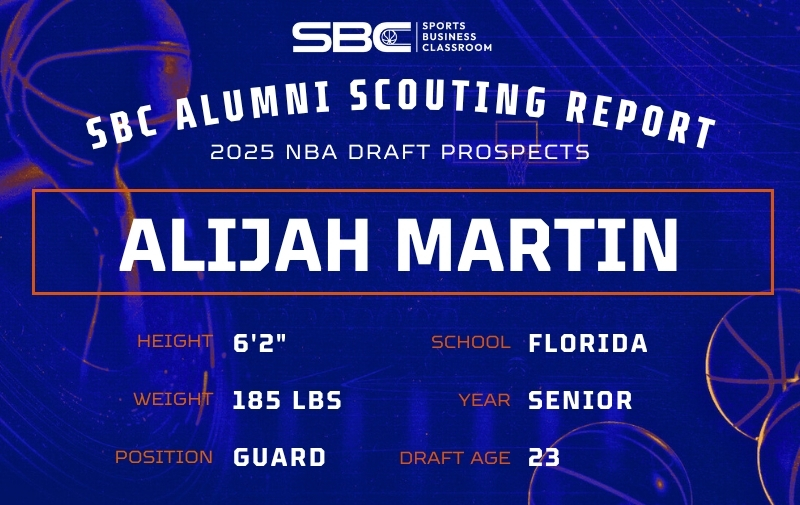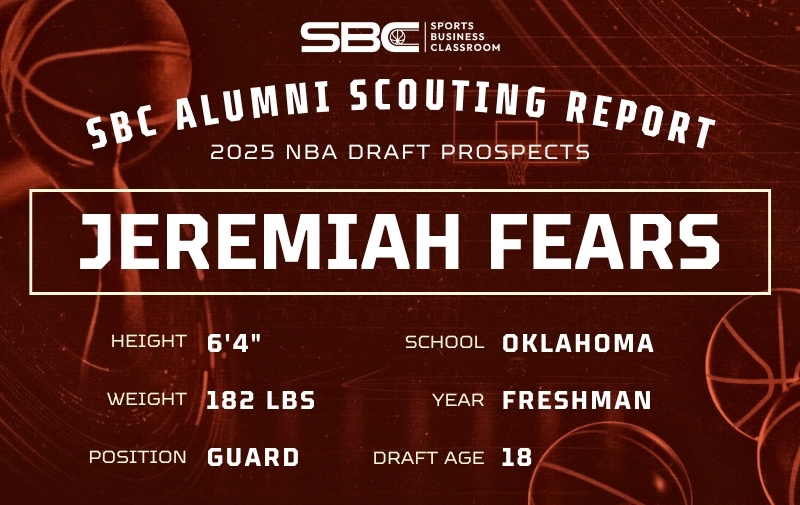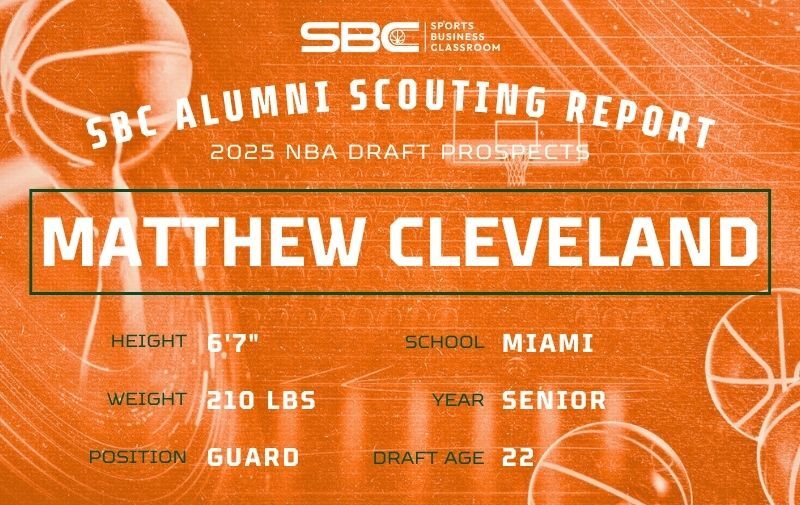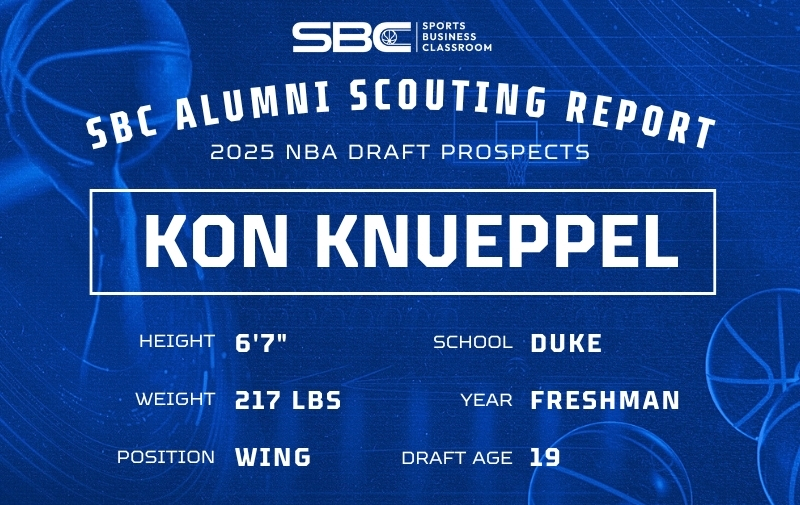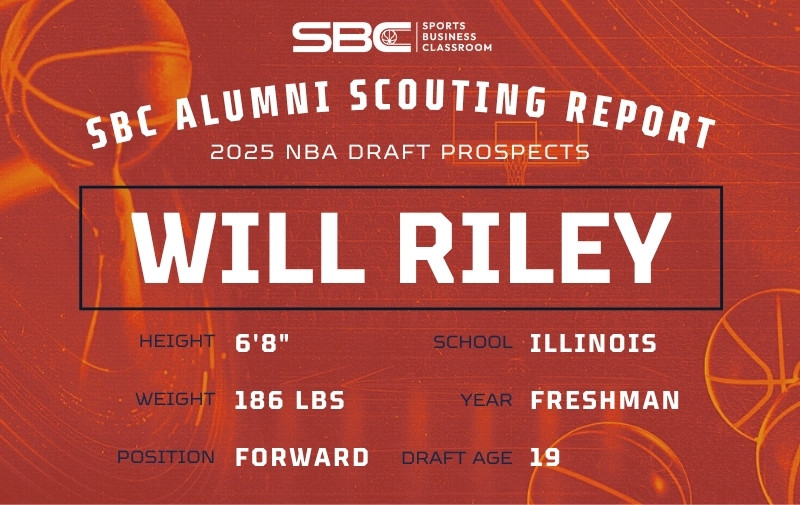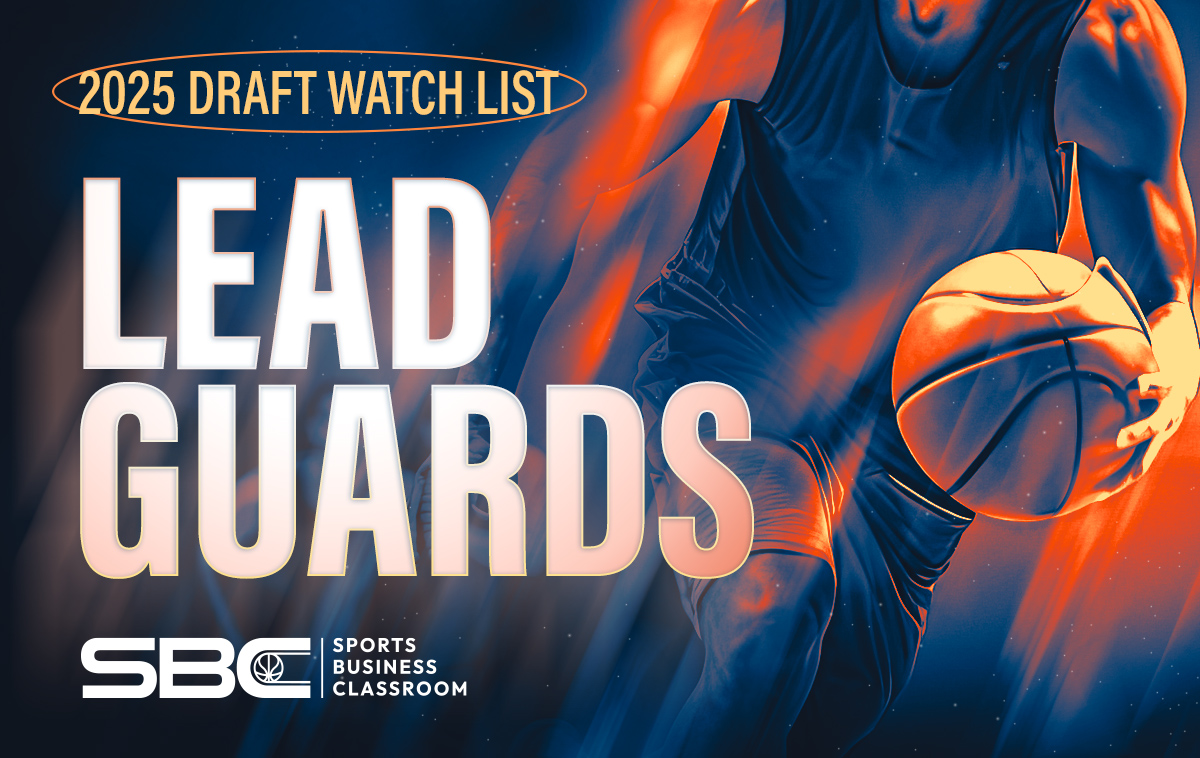
With the NCAA and other leagues worldwide officially in full swing and the NBA season already approaching the first quarter mark, NBA scouts are now hard at work looking for their teams’ next potential star and core pieces. As a part of Sports Business Classroom’s 2025 NBA Draft series, the following are lead guards to watch ahead of June’s draft.
Lead guards primarily bring the ball up the floor and initiate their team’s offense. While they can also be scorers and elite defenders, the one constant among these players is that they typically cross the halfcourt line with the ball.
Dylan Harper represents one of Rutgers’ two-headed monster of elite freshmen this season. At only 18 years of age, he boasts an incredible all-around game, as he is able to score, rebound, and make plays at a very high level. However, his control of the game’s pace will solidify Harper as a top-five pick in this draft. His speed and athleticism will not jump out at you, but he uses what he has to his advantage to manipulate defenses. Harper can change his speed and direction very well with the ball in his hands, giving him ample opportunity to create a shot for himself or others, similar to that of Cade Cunningham. He is way ahead of schedule in terms of size at 6’6”, 215 lbs, and with his ball skills and IQ, he has the opportunity to join what is already a stacked cohort of young star point guards in the NBA.
The quickest riser through the young NCAA season thus far has been freshman, Egor Demin, a 6’9” point guard from Russia. Demin’s early season play has him in the running to be BYU’s greatest NBA prospect. His playmaking was undeniable as he moved from overseas to college basketball, but his scoring ability was more questionable. So far, Demin has scored 17 points per game on 55 percent shooting from behind the arc. While his playmaking and size are enough to warrant a lot of attention, if his shooting remains this elite, keep an eye on him as a potential top-five pick in this draft.
First Round:
- Dylan Harper – Rutgers
- Nolan Traore – Saint-Quentin (France)
- Egor Demin – BYU
- Ben Saraf – Ratiopharm Ulm (Germany)
- Kasparas Jakucionis – Illinois
- Boogie Fland – Arkansas
Second Round:
- Jaland Lowe – Pittsburgh
- Xaivian Lee – Princeton
- Tyrese Proctor – Duke
- Kanaan Carlyle – Indiana
- Kadary Richmond – St. John’s
- Walter Clayton Jr. – Florida
- Labaron Philon – Alabama
- Caleb Foster – Duke
G League/Undrafted:
- Augustus Marciulionis – St. Mary’s
- Tamin Lipsey – Iowa State
- Sergio De Larrea – Valencia (Spain)
- Caleb Love – Arizona
Xaivian Lee burst onto the scene last season during his sophomore year at Princeton, making first-team All-Ivy League after placing second in points and third in assists. He returned to school for his junior year after teams remained skeptical during the pre-draft process but has initially improved his draft stock. Lee is a crafty shotmaker, becoming an elite shooter off the dribble. He is shooting 41.7 percent from three in his first five games this season, with many being tough looks. His size (6’3”, 180 lbs) may be a concern defensively. He needs to improve his shooting from two-point range (initially below 40 percent this season), which could lead to a second-round nod.
After spending two seasons as a projected second-round pick before ultimately returning to Duke, Tyrese Proctor is finally coming into his own in his junior season. He has great size and plays with a smooth pace. As an older, less-explosive player, his draft stock may be limited, but Proctor can play with and without the ball and may become a reliable backup NBA point guard. He just needs to improve as a shooter, which has trended well (initially at a 47/50/80 clip).
Tamin Lipsey is an elite defensive prospect for Iowa State who has proven he can hold his own against big-time prospects. He led the Big 12 in steals as a sophomore last season and earned all-defense honors. Smaller guards who are elite in college can struggle at the next level (Frank Mason III, Carsen Edwards, Tyler Ulis, etc.); Lipsey’s defense may help him to counter this pattern. At only 6’1”, he has a 200-pound frame that allows him to play bigger than his height suggests. He slides his feet exceptionally well and uses his strength to limit drives from those who are taller than him. He is also an effective offensive player, shooting almost 50 percent from two-point range for his career and displaying streaks of impressive three-point shooting. He knows how to use his body to finish at the rim while being aware of his size and rarely forces a shot. While matchups look slightly different at the NBA level, where he won’t often have a matchup advantage, his grit and IQ on both ends of the floor will give him a legitimate chance to find minutes as a rotation guard in the NBA.


